More than 3000 snake species have been discovered around the world. About 108 of them can be found in Sri Lanka. Nearly 50% of them (58) are endemic to us. When thinking about snakes, what comes to your mind in the first place? Most of the commoners have this fixed idea that all the snakes or most of them are venomous that can kill us. Lack of proper education regarding this topic has led to such misunderstandings. But the truth is vice versa, the majority are non – venomous.
Snake Venom
Snake venom contains proteins, polypeptides, and many other chemical compounds. Zootoxin is the main toxin that helps it with the immobilization and digestion of prey. Most species inject the venom by using their front fangs. But some species can spit their venom. Venom is secreted by the modified parotid salivary glands. These toxins can be predominantly Neurotoxins or hemotoxins. Neurotoxins in venom of snakes like Cobra and Krait act on the nervous system, where they can paralyze the muscles of the heart and respiratory system. Hemotoxin in venom of snakes such as Russell’s Viper, causes blood clotting inside vessels. Snakes in Sri Lanka can be categorized into four groups, depending on the lethality of their venom. They are; Deadly venomous, Potentially highly venomous, Slightly venomous and Non-venomous.

Indian cobra, Russell’s Viper, Common Krait, Sri Lankan Krait, Lowland Hump-nosed Pit Viper and Merrem’s Hump-nosed Pit Viper are the six deadly venomous land snakes in Sri Lanka. Most deaths due to snake bites are caused by Cobra, Russell’s Viper, and Common Krait.
Deadly Venomous Snakes
1) Indian Cobra (Naja naja) – නාගයා
Belongs to the Family Elapidae and Genus Naja. A well-grown cobra can be 100 – 150 cm long. Mostly they are black or dark brown, with white crossbars on each side. They can be easily identified by their quite impressive hood, which expands when feeling threatened. Most encounters have been recorded during nighttime. At daytime, less active and can be found in small dens or on bushes.
Fact – There are numerous myths about cobras in India. During their festivals of Nag Panchami and Naagula Chavithi, Hindus worship cobras.
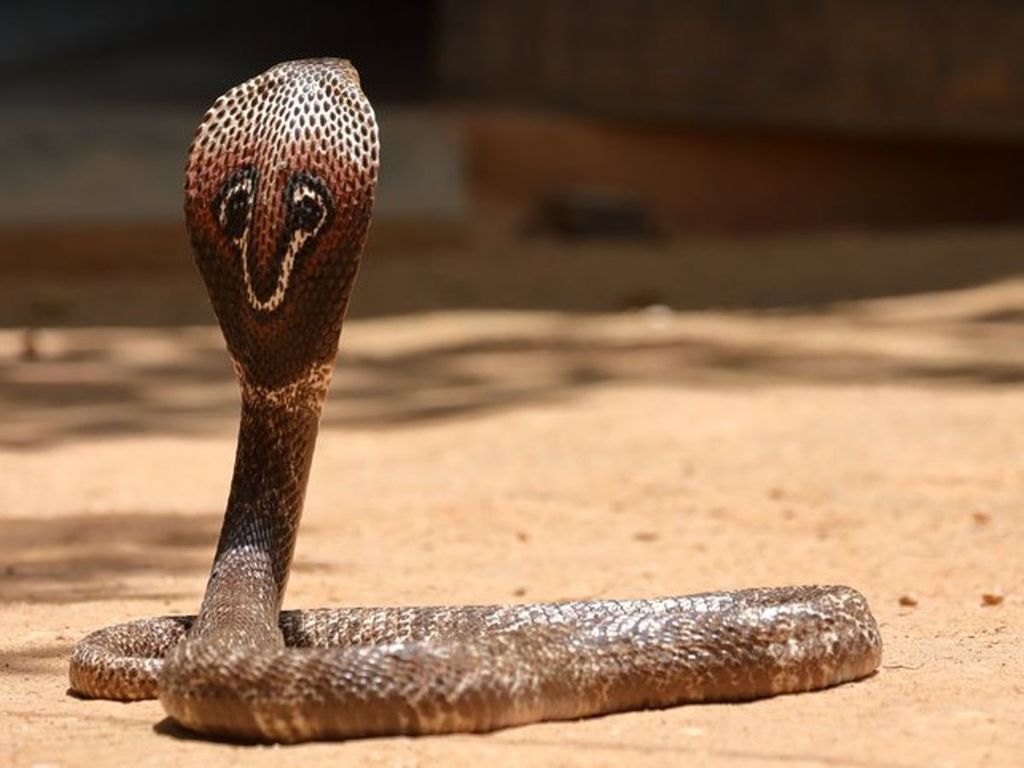
2) Common Indian Krait (Bungarus caeruleus) – තෙල් කරවලා / මග මරුවා
Belongs to the Family Elapidae, and Genus Bungarus. The average length is around 90 cm. Males are longer than females. Generally black or bluish-black color. Young ones show clear albino patterns on the skin, but not the older ones. The body is smooth and glossy, covered with highly polished scales. The body shines just like oil on it. Likes to
wander near water bodies.
Fact – When they are flustered, these Kraits will coil up with the head concealed, flatten the body and make jerky movements.
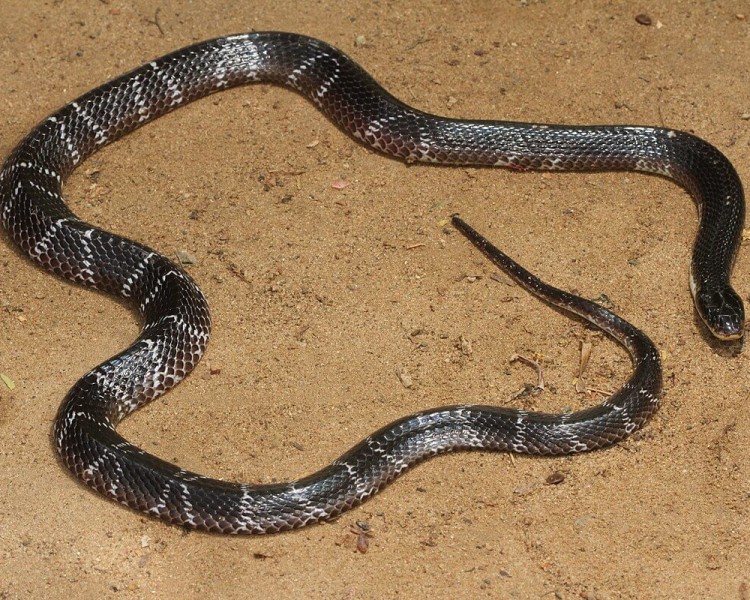
3) Sri Lankan Krait (Bungarus ceylonicus) – මුදු කරවලා
From the Family Elapidae and Genus Bungarus. This is an endemic species to our beautiful island. Commonly found in hilly areas such as Kandy, Gampola, Balangoda. Most traits are similar to Common Kraits. But a little smaller in size (averagely 75cm). The most highlighted trait of this snake is the prominent white band pattern that can be seen on the skin.
Fact – Sri Lankan Krait was given its Sinhala name ‘මුදු කරවලා’, due to its ring-like bands on the body.
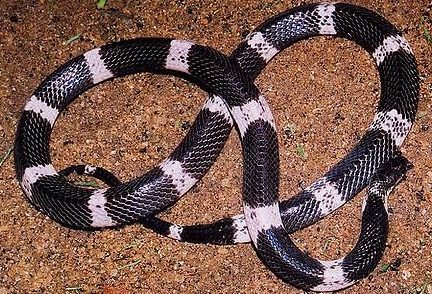
4) Russell’s Viper (Daboia russelii) – තිත් පොළගා
Belongs to the Family Viperidae and Genus Daboia. Can grow to a maximum length of 166cm. Has a stout body with three series of dark brown spots that run along the whole length. The head is flattened and has a triangular shape. In the middle of the nasal scale, there is a pair of large nostrils. The color can be orange, deep yellow, or tan. These are mostly seen in open, grassy areas. Show more nocturnal behaviors. Normally slow and inactive.
Fact – These are very famous for their unique moving style, which is known to form an ‘S’ shape while moving.
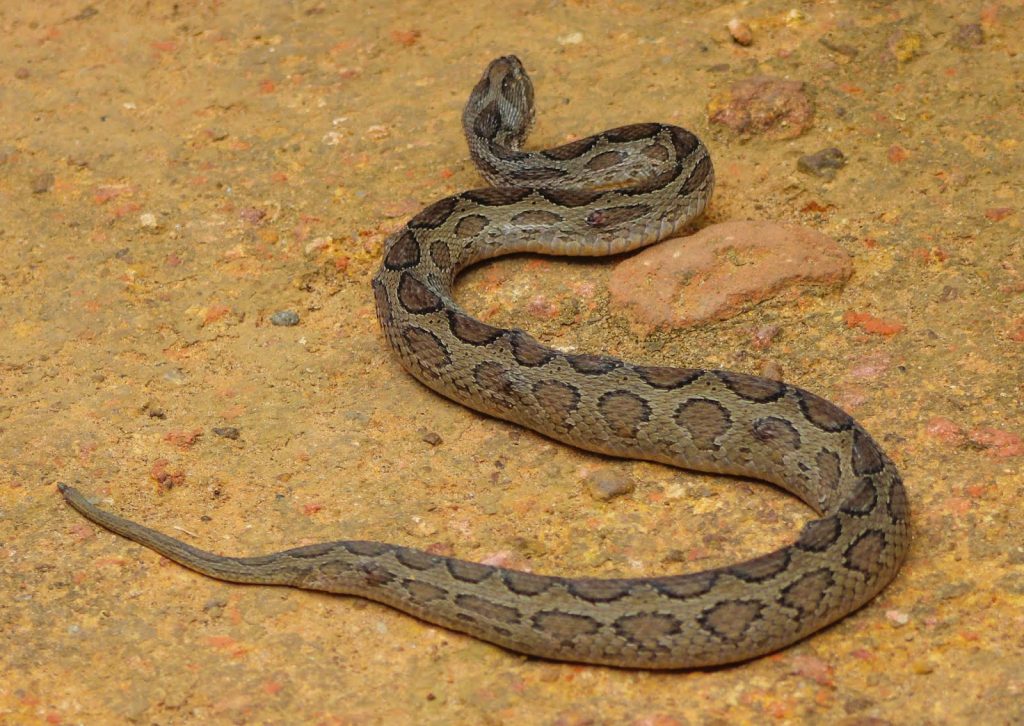
5) Merrem’s Hump – Nosed Viper (Hypnale hypnale) – පොලොන් තෙලිස්සා
Has an average length of 30-45 cm. Its stout is typically grayish, with heavy brown mottling. The mouth area is pointed, ending in a hump. The tail tip is yellowish/ reddish. Show nocturnal behavior. Very aggressive when disturbed. This is the snake species that has caused the highest number of recorded snake bites.
Fact – If you ever see a hump–nosed viper vibrating its tail, better to step back. Because it’s a sign that it’s annoyed.
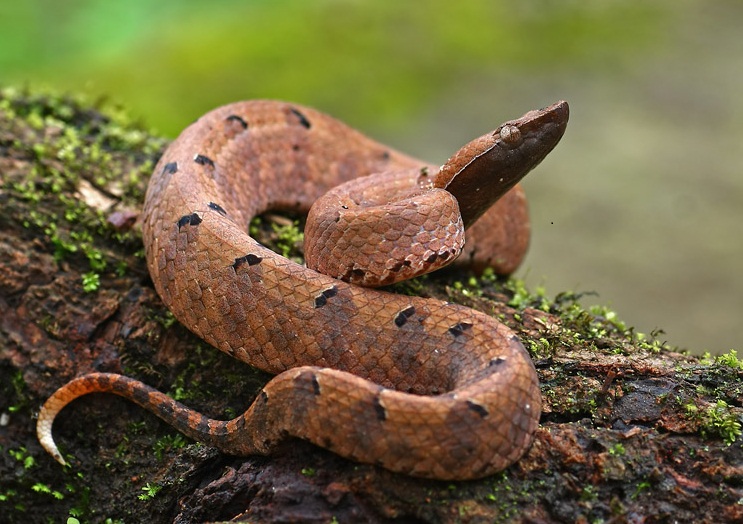
6) Lowland Hump- Nosed Viper (Hypnale zara) – මූකලන් තෙලිස්සා
Endemic to Sri Lanka. Can grow up to 35 cm long. Triangular-shaped head. Across the eyes and cheeks, there’s a dark stripe. Venter is lighter than dorsum; which is yellow-brown or dark brown. Ridged costal scales.
Fact – When they rest, they keep their head at a 45-degree angle to the ground.

Non Venomous Snakes
These snakes don’t produce a toxin that is harmful to human health. But we should never assume that a bite from these snakes cannot be risky. Even non-venomous snake bites require proper medical treatments. Here are some common non-venomous species.
1) Indian Python (Python molurus) – පිඹුරා
This is the largest snake found in Sri Lanka. Belongs to Family Pythonidae and Genus Python. Can grow up to 270 – 330 cm long. Unorganized light color line patterns on the body. The head is mostly pinkish. Body color in light brown, tan, and yellow. Lives in a wide range of habitats. Has a very lethargic and slow-moving nature usually owing to the heavy body weight. Mostly it’s a cardiac arrest that cause death of its prey. Since their jawbones are not connected they can feed on relatively large animals like, Deer and Calves as well. Do not carry venom.
Fact – The fictional character ‘Kaa’ from the world-famous story, ‘The jungle book’, is a giant
Indian python.
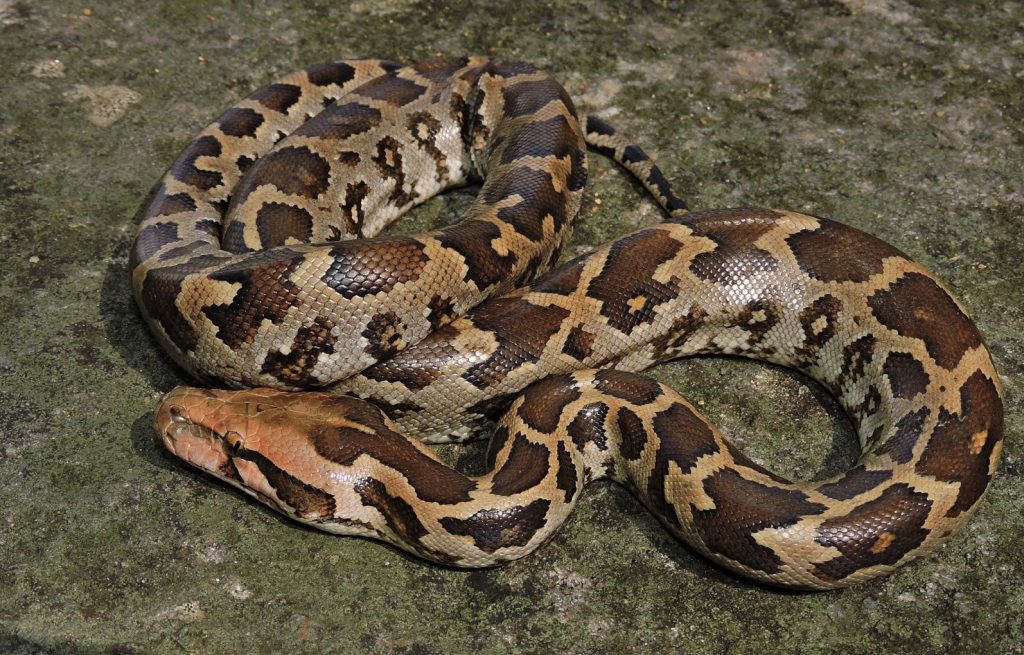
2) Rat Snake (Ptyas mucosa) – ගැරඩියා
Belongs to Family Colubridae and Genus Ptyas. Can be seen very commonly, even domestically. The typical mature length is around 150 – 195 cm. Can be quite slender. Mainly in black or brown/ yellowish color. The outlines of scales near the mouth and neck area are dark. They are fast-moving. Good swimmers and climb trees effortlessly (A good proof why they can be found inside our ceilings).
Fact – Male Rat snakes have a unique method of establishing boundaries, where they intertwine their bodies and test each other’s strength.
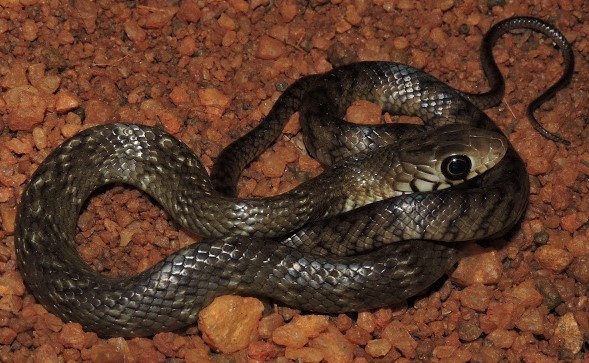
There are more other species that are mild-venomous to non-venomous. Eg:- Common Indian Cat snake (රෑන් මාපිලා) which is mildly venomous, Common Sand Boa (වැලි පිඹුරා), etc. As said earlier the majority are non-venomous. Unfortunately, some of these non – venomous snakes carry similar appearances to some other venomous snakes. Eg:- The non-venomous Wolf Snake (රදනකයන්) mimics the color pattern of Sri Lankan Kraits. But we can distinguish them by the hexagonal vertebral scales on Kraits’ body, that are absent in Wolf Snakes. Mostly Wolf Snakes are killed by people, due to this misunderstanding.
All these venomous and non – venomous snake species play a crucial role in maintaining the balance of the ecosystems on earth. Even the deadly venomous species do not have intentions to attack people. They only do that if they feel threatened. So let’s spread this information to protect these valuable species.
Written By:
K.B. Shehara Nethmini
1st Year Undergraduate,
Faculty of Science,
University of Colombo.
References:
- A. (2021, June 25). Snakes in Sri Lanka. AmazingLanka.Com. https://amazinglanka.com/wp/snakes-in-sri-lanka/
- Maduwage, K., de Silva, A., & Fernando, D. (2017). Identification of venomous snakes of Sri Lanka. http://slma.lk/wp-content/uploads/2017/12/7.Identification-of-venomous-snakes-of-Sri-Lanka.pdf
- Kanishka, S. (2020, October 29). Wart Snake/රෙදි නයා (Acrochordus granulatus-Schneider, 1799). www.Snakesofsrilanka.Blogspot.Com. https://snakesofsrilanka.blogspot.com/?m=1
Image Courtesy:
- Title Image: https://bit.ly/3eSgmI9
- 1st Content Image: https://bit.ly/3BFAbfw
- 2nd Content Image: https://bit.ly/2VbotZD
- 3rd Content Image: https://bit.ly/3iLM6jo
- 4th Content Image: https://bit.ly/37dpPG5
- 5th Content Image: https://bit.ly/3kRjVCk
- 6th Content Image: https://bit.ly/3kOlHEl
- 7th Content Image: https://bit.ly/3i4n14h
- 8th Content Image: https://bit.ly/3fbhO91
- 9th Content Image: https://bit.ly/3y5Jgfs


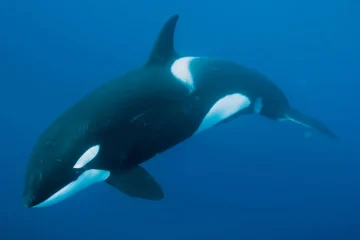
0 Comments